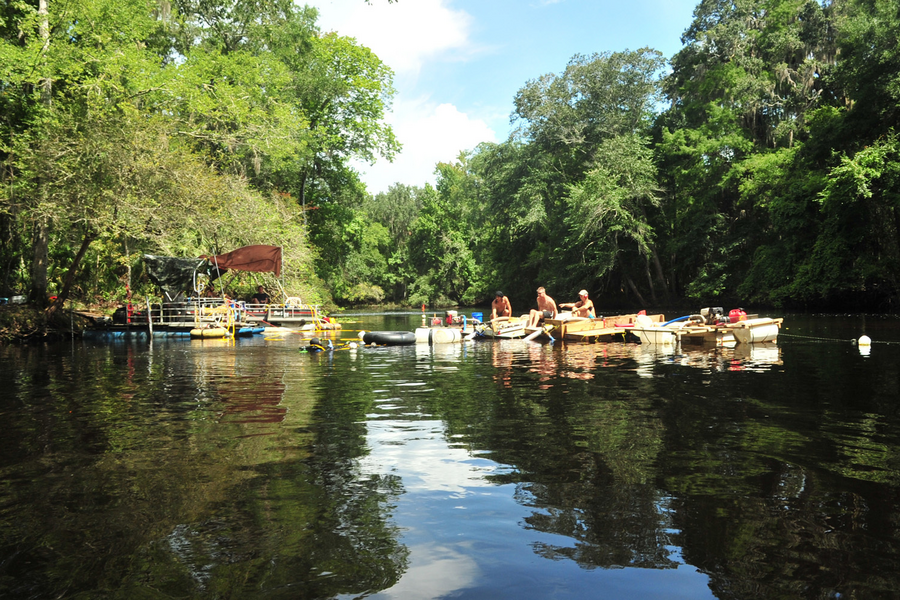Florida sinkhole turns back the clock for first Americans
Loading...
After hundreds of dives to excavate a sinkhole 30 feet deep in the Aucilla River on Florida’s Gulf Coast, a team of archaeologists has unearthed a wealth of evidence that shows humans occupied the Americas 14,550 years ago, about 1,500 years earlier than expected.
Several rounds of radiocarbon dating confirmed that the stone tools, mastodon bones with cut marks suggesting they were butchered, and mastodon dung found predate the Clovis people, who were once considered the Americas' first people by archaeologists for more than a half century. Previous archaeological evidence has shown the Clovis people, known for their distinctive spearheads, to be about 13,000 years old.
According to new findings reported in a paper published Friday in the journal Science Advances, these pre-Clovis people coexisted with megafauna, such as mastodons, great bison, and rhinoceroses, in the Gulf Coast Plains for 2,000 years before a mass extinction is thought to have wiped the animals out.
"There was perennial and widespread public interest in the story of early human occupation of the Americas, the mysterious loss of its remarkable megafauna, and the dramatic changes in climate, including glaciations and the subsequent de-glaciations," said Philippa Jane Benson, managing editor of Science Advances, during a press conference last week.
"These fascinating findings are of interest not only to archaeologists but also to climate scientists, paleontologists, earth scientists, and environmental biologists. These findings are also timely given that we're currently facing significant changes in sea level, climate and extinction," she said.
The Page-Ladson site was first discovered more than three decades ago by recreational diver Buddy Page. It is the oldest archaeological site in the Southeastern United States, and the oldest submerged site yet discovered in the new world, said Jessi Halligan, an anthropologist from Florida State University in Tallahassee and primary author on the paper, during the press call.
After Mr. Page led a team of archaeologists to the site, they excavated it for several seasons throughout the 1980s and 1990s, discovering an adult mastodon tusk that appeared to have human-made cut marks. They also found several possible stone items, which, along with the tusk were dated to 14,400 years ago.
"An impossible age for the scientific community to accept at the time because it was well-accepted that the Americas were colonized by the Clovis people who arrived on the continent over the Bering Land Bridge no longer than 13,500 years ago at the oldest," Dr. Halligan explained.
Her team decided to follow up on decades-old research, conducting 890 dives between 2012 and 2014 into the 30-foot-deep sinkhole in limestone bedrock at Page-Ladson site. They excavated stone tools including a biface, a stone knife useful for butchering animals, and bones of extinct big mammals including camels, bison, horses, and mastodons.
The artifacts suggest that these early human hunter-gatherers butchered or scavenged a mastodon, now extinct, next to a small inland pond. The clues were in the cut marks in the tusk from a tool used to remove it from the skull, possibly to access edible tissue at its base.
Humans are thought to have come to the Americas during the last Ice Age over a land bridge that is expected to have connected Siberia to Alaska, but the timing of that event isn't settled.
"The evidence from the Page-Ladson site is a major leap forward in shaping a new view of the peopling of the Americas at the end of the last Ice Age," Texas A&M University archaeologist Michael Waters, a co-author on the paper, said.
Keep reading for more a more in-depth look at this find and the controversy surrounding the theory that the Clovis people were the first humans to arrive in America.






